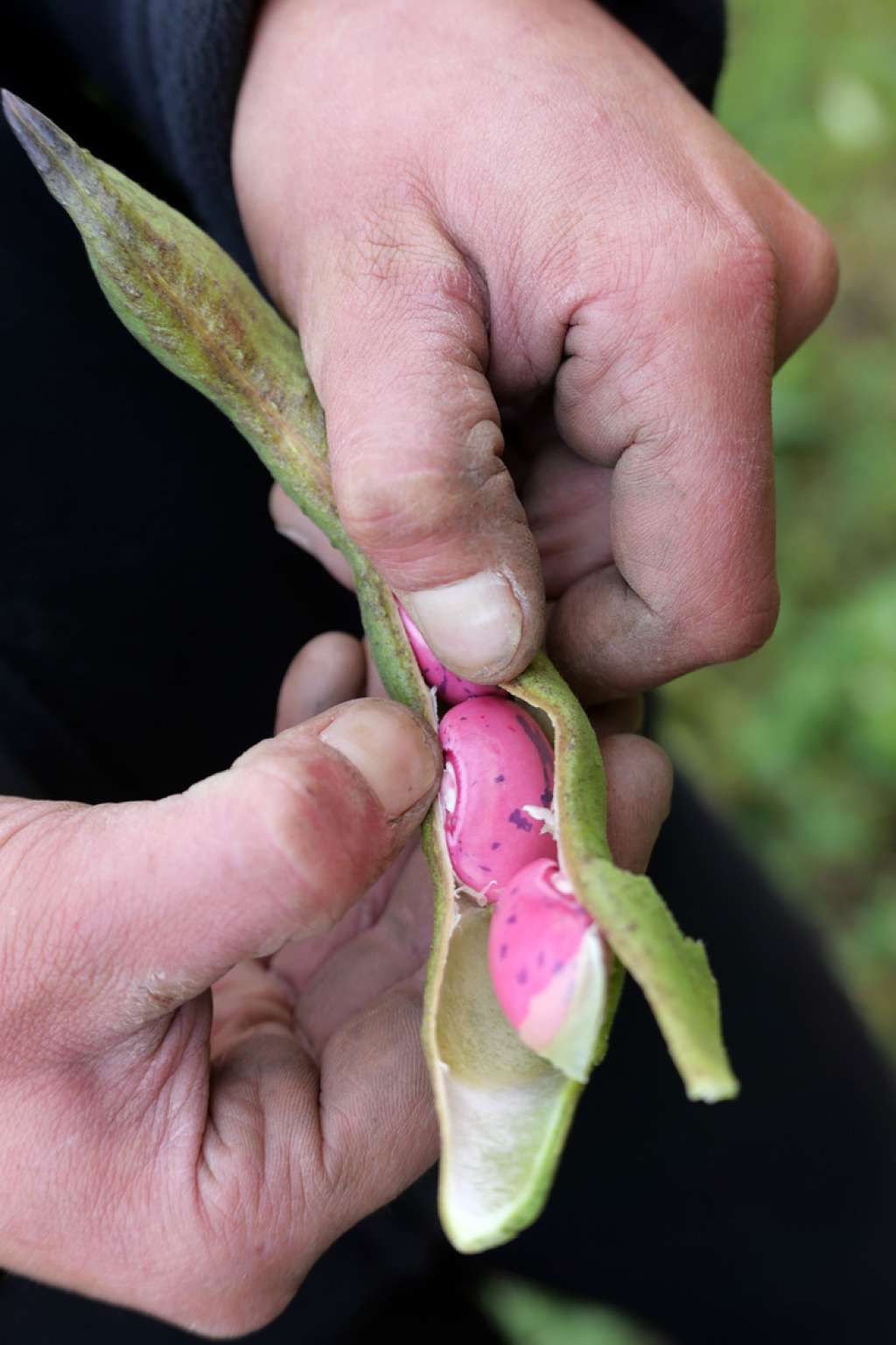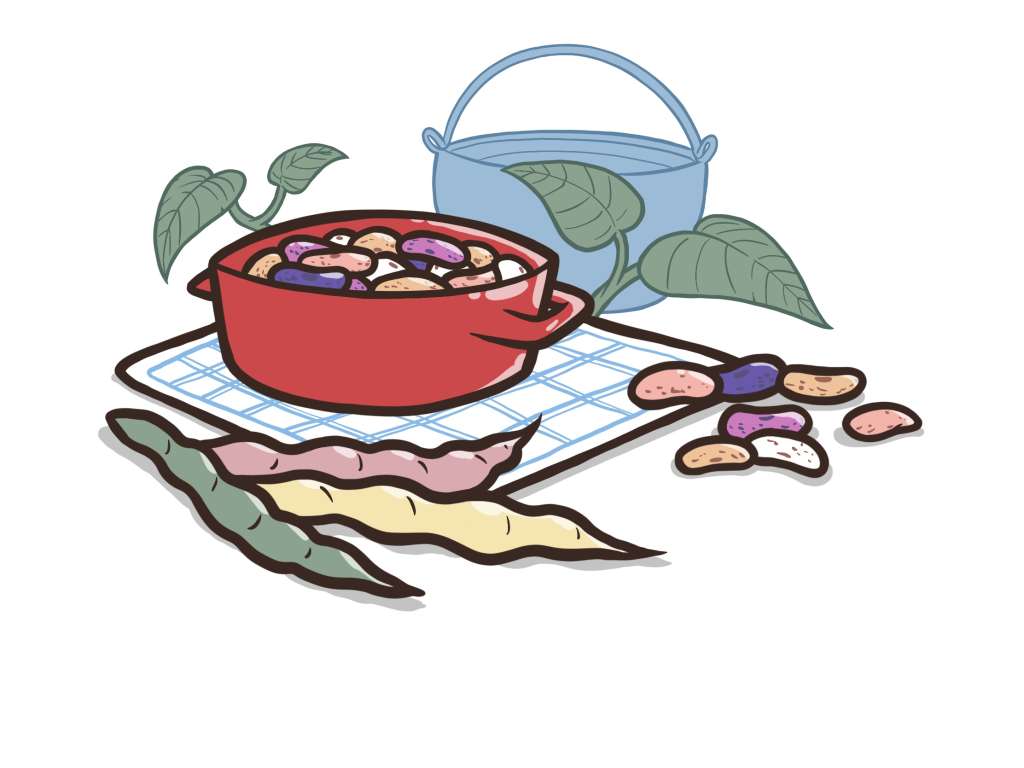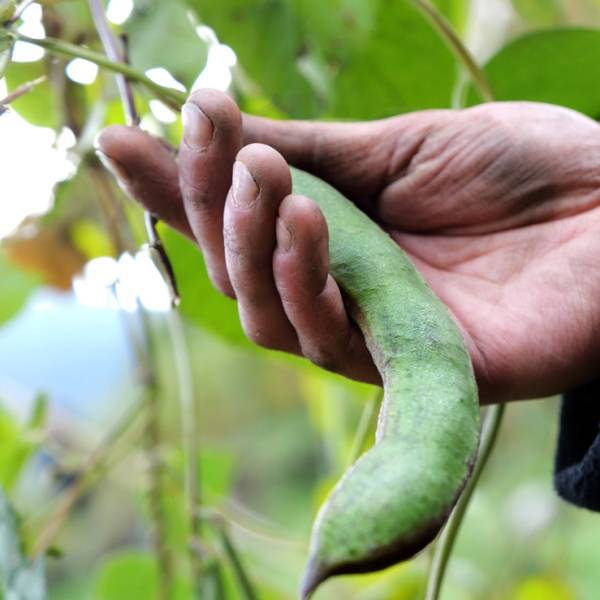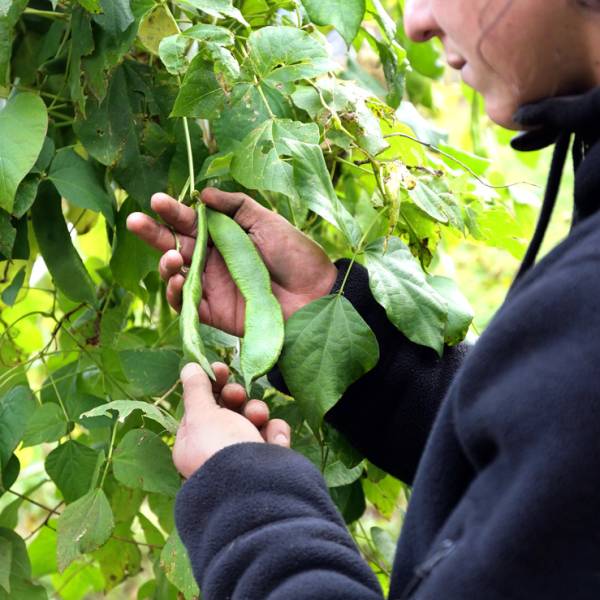Wild vegetables and herbs
COPAFAM
Typical large and rustic mountain beans, with an unmistakable flavour


Wild vegetables and herbs
COPAFAM
Typical large and rustic mountain beans, with an unmistakable flavour
The “Copafam” bean (Phaseolus Coccineus) is one of the most beautiful varieties of beans, much bigger than the others and very colourful.
Its flowers are overwhelmingly red and numerous at the beginning and at the end of summer, but pay attention, this bean stops blooming if it's too hot.
The seeds have bright colours, from pink to purple, with incredible colour nuances, going from uniform white to beige mottled with brown, to purple mottled with a darker purple and some which are completely ocean blue.
HISTORY
Since the time of its import from America, it has been cultivated in mountainous areas. It arrived in Valle Camonica during the period of the Republic of Venice and was highly appreciated in the cuisine of the valleys because it is very nutritious. That’s why they were called Copàfam (hunger killers).
CHARACTERISTICS
After harvesting, the pods are shelled, and the beans dried in dry places, not in the sun.
Copàfam beans are eaten boiled, soaked for twelve hours and cooked for two. They have a compact and sweet flavour, similar to chestnuts.
Seasoned with garlic or onion, oil, vinegar and salt, they satiate and nourish, and they are considered the "meat of poor people".
SEASONALITY
In August, the first legumes appear on the plants and manual harvesting begins as they mature.
ANECDOTES
As happened to other plants that came from America, for a long time Phaseolus Coccineus was cultivated only for ornamental purposes, because of its delicate flowers, similar to small orchids, and planted in the gardens or in pots to be kept at the windows of rich houses.
It can quickly cover a fence or any tall support with leaves and flowers.




